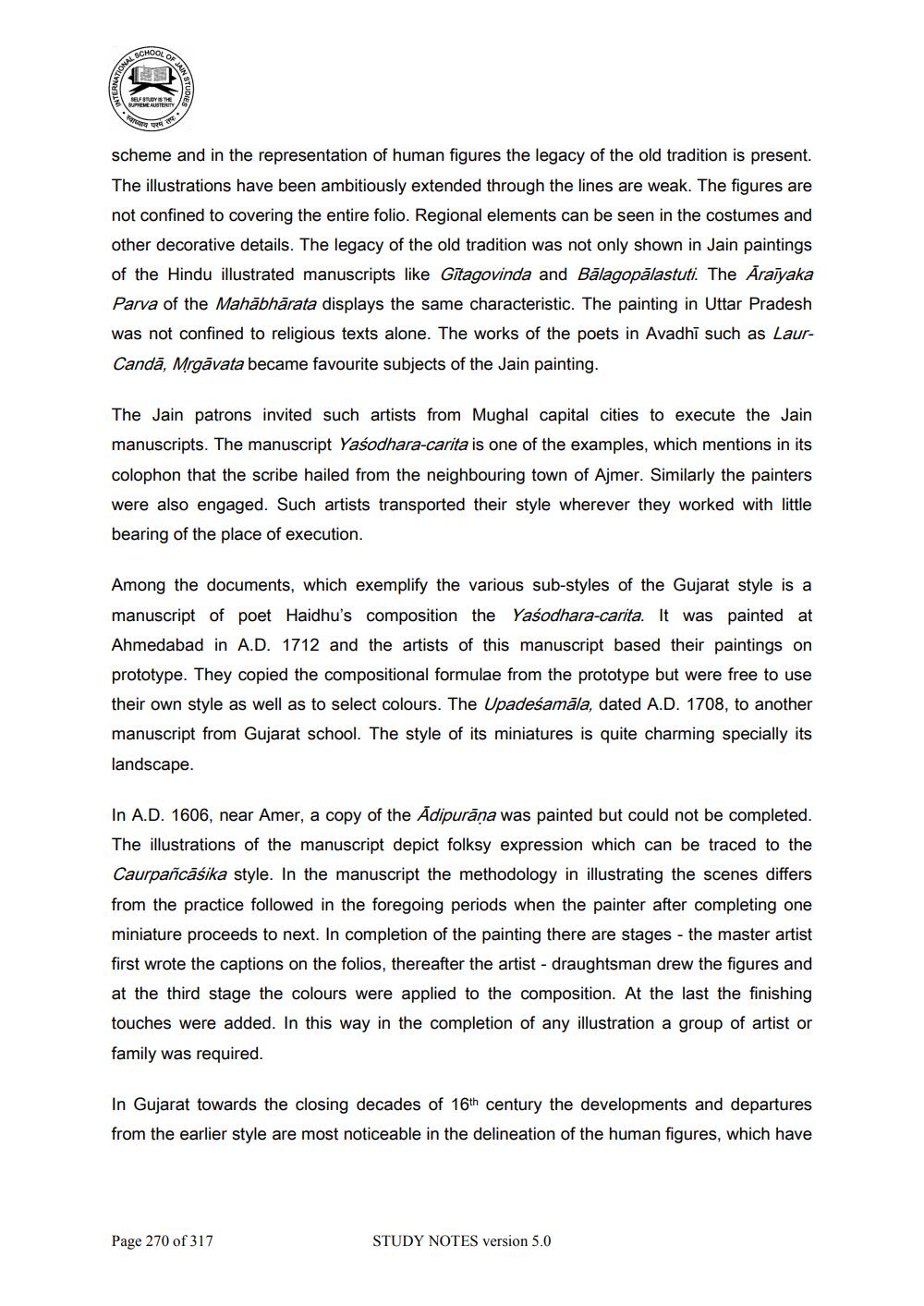________________
SCHOOL
TIONAL
OF
AN STUDIES
SELF STUDY IS THE SUPREME AUSTERITY,
स्वाध्याय परमं तपः
scheme and in the representation of human figures the legacy of the old tradition is present. The illustrations have been ambitiously extended through the lines are weak. The figures are not confined to covering the entire folio. Regional elements can be seen in the costumes and other decorative details. The legacy of the old tradition was not only shown in Jain paintings of the Hindu illustrated manuscripts like Gitagovinda and Balagopalastuti. The Araiyaka Parva of the Mahabharata displays the same characteristic. The painting in Uttar Pradesh was not confined to religious texts alone. The works of the poets in Avadhī such as LaurCanda, Mrgavata became favourite subjects of the Jain painting.
The Jain patrons invited such artists from Mughal capital cities to execute the Jain manuscripts. The manuscript Yasodhara-carita is one of the examples, which mentions in its colophon that the scribe hailed from the neighbouring town of Ajmer. Similarly the painters were also engaged. Such artists transported their style wherever they worked with little bearing of the place of execution.
Among the documents, which exemplify the various sub-styles of the Gujarat style is a manuscript of poet Haidhu's composition the Yasodhara-carita. It was painted at Ahmedabad in A.D. 1712 and the artists of this manuscript based their paintings on prototype. They copied the compositional formulae from the prototype but were free to use their own style as well as to select colours. The Upadeśamāla, dated A.D. 1708, to another manuscript from Gujarat school. The style of its miniatures is quite charming specially its landscape.
In A.D. 1606, near Amer, a copy of the Adipurāṇa was painted but could not be completed. The illustrations of the manuscript depict folksy expression which can be traced to the Caurpañcāsika style. In the manuscript the methodology in illustrating the scenes differs from the practice followed in the foregoing periods when the painter after completing one miniature proceeds to next. In completion of the painting there are stages - the master artist first wrote the captions on the folios, thereafter the artist - draughtsman drew the figures and at the third stage the colours were applied to the composition. At the last the finishing touches were added. In this way in the completion of any illustration a group of artist or family was required.
In Gujarat towards the closing decades of 16th century the developments and departures from the earlier style are most noticeable in the delineation of the human figures, which have
Page 270 of 317
STUDY NOTES version 5.0




